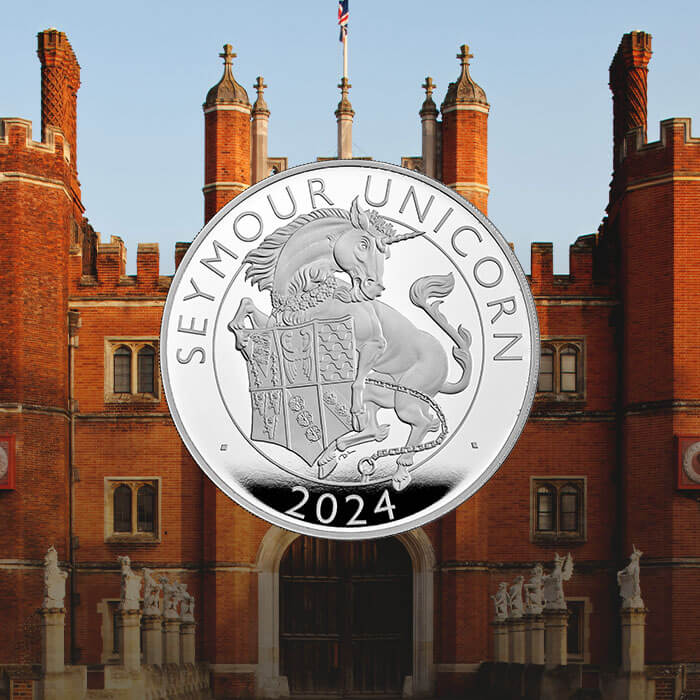The Seymour Unicorn is the latest beast to feature on a coin as part of The Royal Tudor Beasts Collection. Standing opposite the Lion of England at the front of the Moat Bridge at Hampton Court Palace, this symbol of purity and fertility is the chief supporter of Jane Seymour, which was given to her by her husband, Henry VIII, as a gift.
Before the fifteenth century, and its inclusion as a heraldic beast on the Moat Bridge, the unicorn rarely featured in heraldry. The Seymour Unicorn has the body of a horse, the tail of a lion, the cloven hooves and beard of a goat, and a spiralled horn on its forehead. It wears a royal coronet and is gorged with a garland of white daisies and red roses. This royal coronet and wreath of flowers differentiates the Seymour Unicorn from the Unicorn of Scotland.
The Seymour Unicorn bears the six-quartered Arms of Jane Seymour and around its neck a chain that would have been painted gold during the time of Henry VIII’s reign. Many believed that unicorns were wild creatures that needed to be tamed, hence the frequent depiction of the animal collared and chained. The six-quartered Arms of Henry VIII’s third wife features Jane Seymour’s Arms of augmentation, the Seymour wings in lure, the Beauchamp and Hacche, the shield of Sturmy, the MacWilliams shield and the Coker shield. Jane Seymour would have inherited these inclusions to her Coat of Arms through her Seymour ancestry.
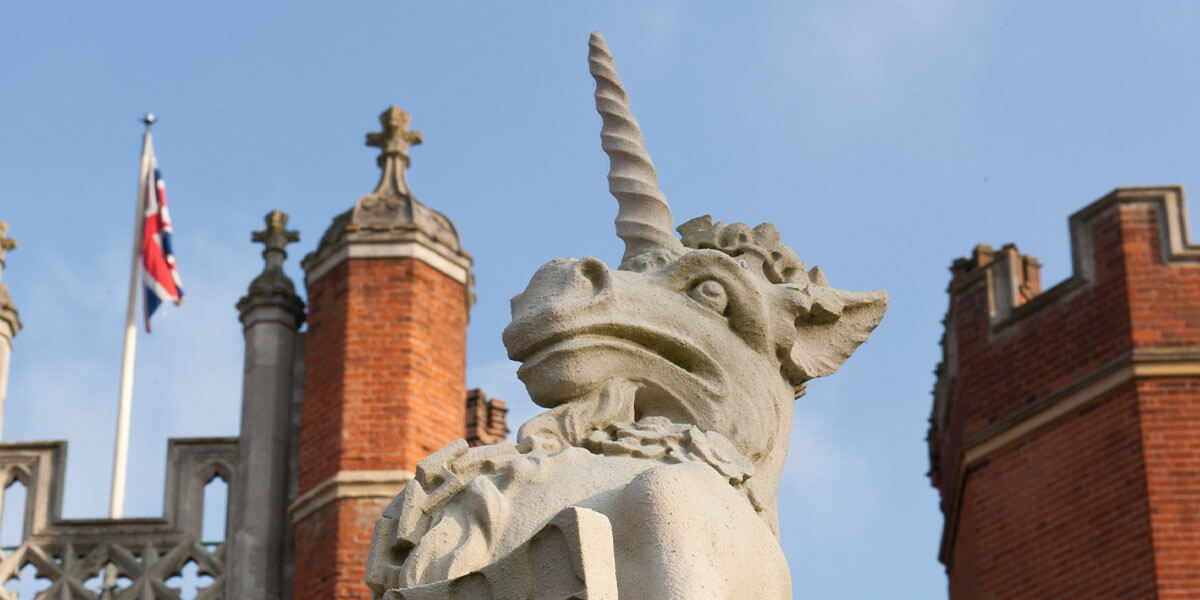
A Mythical Beast
Early depictions of the unicorn feature attributes of deer and goats, such as cloven hooves. Although we know today that it is indeed a mythical creature, many believed the unicorn to be a real animal until as recently as the seventeenth century.
It is thought that the images of the animal can be traced back to knights who fought in the Holy Wars in Syria and Palestine, who were attracted to the imagery of the native antelopes with spiralled horns. When these images are side on, it appears as if the creature has a single spiral horn instead of two horns. This painted image on the shields of the knights could have then been mistaken for a creature that wasn’t known back home.
Occasionally brought home by knights and travellers as trophies, some of these spiralled horns would have belonged to narwhals, sea creatures with a horn reminiscent of a unicorn.
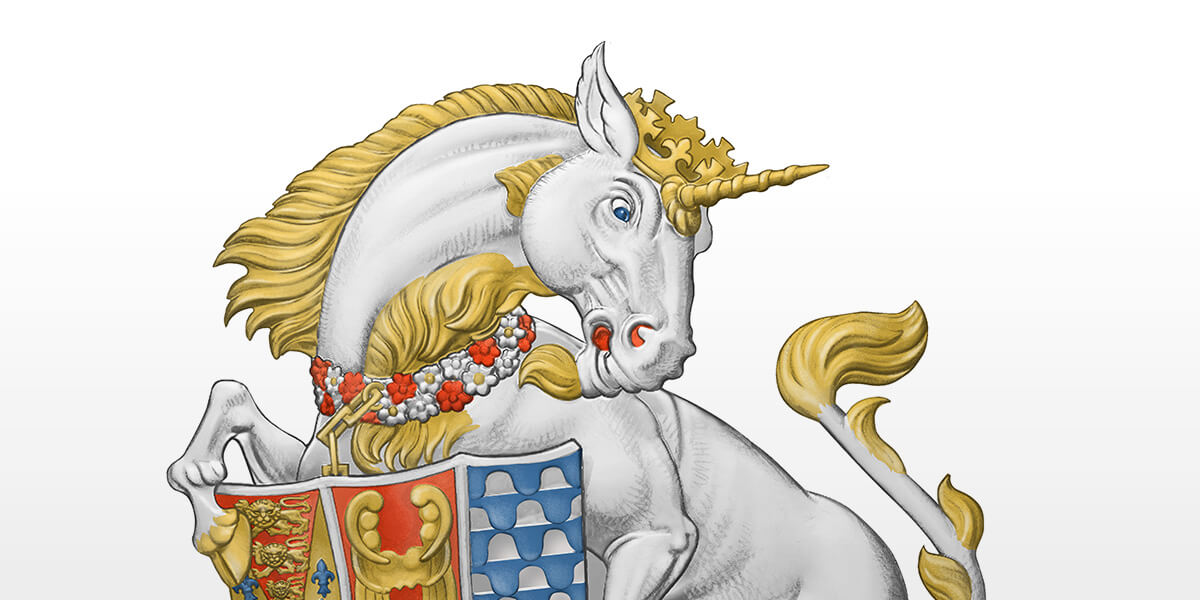
Jane Seymour’s Chief Supporter
Standing at the front of the Moat Bridge, the Seymour Unicorn was selected as the chief supporter for Jane Seymour. In the early 1900s, before Reverend E. E. Dorling restored the Royal Tudor Beasts, there were two unicorns on the Moat Bridge at Hampton Court Palace. After the loss of two pinnacles along the Moat Bridge, it was decided that only one of these two unicorns would be included in the restoration project.
Be Inspired
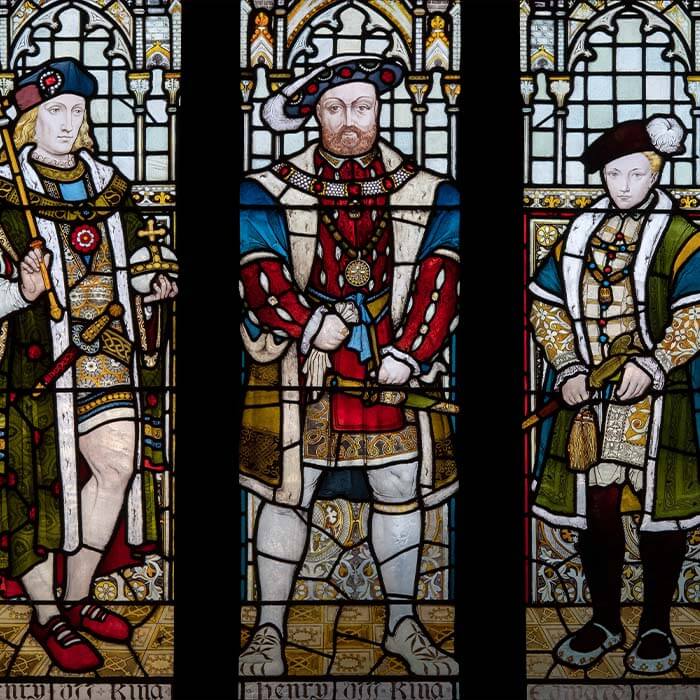
THE QUEST FOR A SON
A Symbol of Fertility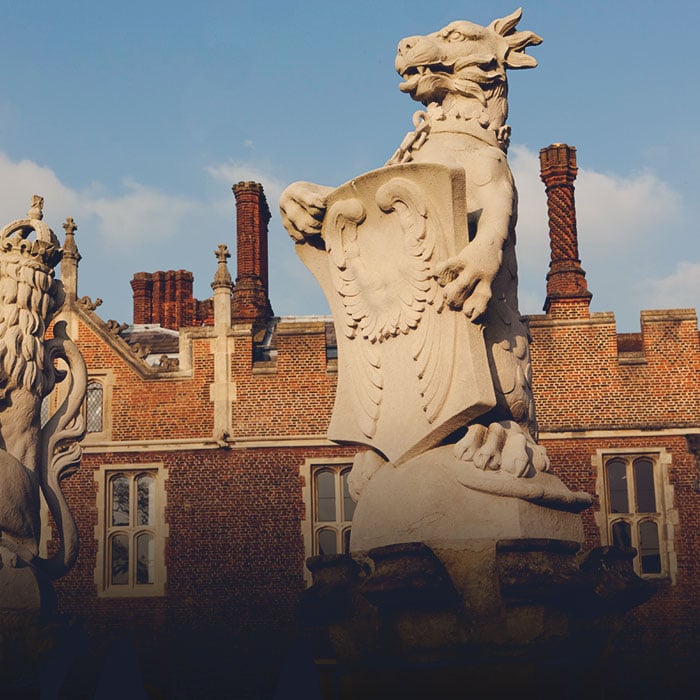
THE ROYAL TUDOR BEASTS COLLECTION
Explore the Beasts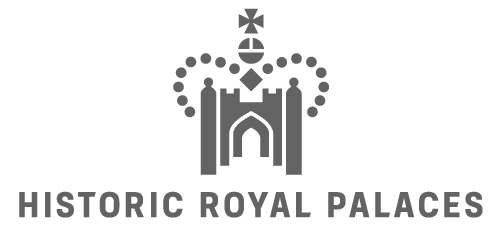
© Historic Royal Palaces 2024 Produced under licence from Historic Royal Palaces Enterprises Limited

